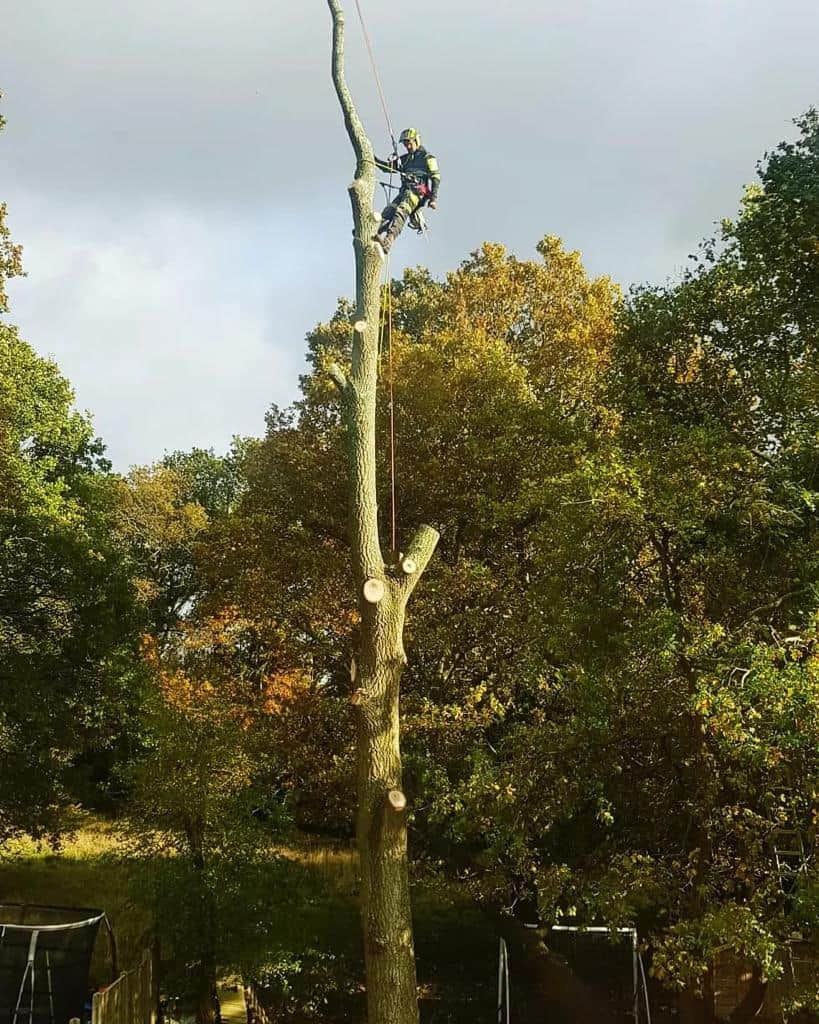Introduction
A well-maintained garden not only enhances the appearance of your property but also ensures the longevity and health of your trees. Without proper care, trees can become overgrown, diseased, or structurally weak, leading to safety hazards and costly maintenance in the future. By using the right tree surgery techniques, you can future-proof your garden, keeping it healthy and thriving for years to come.
At NS Tree Surgery Cobham, we provide expert tree care services in Cobham, Surrey, helping homeowners protect their outdoor spaces. This article explores key tree surgery methods that promote growth, prevent potential risks, and maintain a balanced garden ecosystem.
Key Takeaways
- Future-proofing your garden involves regular tree maintenance and professional pruning techniques.
- Crown reduction, thinning, and deadwood removal promote healthy tree growth.
- Proper tree placement and species selection reduce long-term maintenance issues.
- Regular tree health assessments prevent disease and structural weaknesses.
- Professional tree surgery ensures safe and effective management of garden trees.
Essential Tree Surgery Techniques for a Resilient Garden
1. Crown Reduction for Controlled Growth
Over time, trees can grow too large for their surroundings, causing potential structural issues or blocking sunlight from other plants. Crown reduction involves trimming back branches while maintaining the tree’s natural shape, allowing it to grow in a more controlled manner.
Benefits of crown reduction:
- Prevents trees from becoming too large and overpowering the garden.
- Reduces the risk of branches breaking during storms.
- Encourages balanced growth without damaging the tree’s health.
2. Crown Thinning to Improve Light and Airflow
Dense tree canopies can block sunlight, affecting the growth of plants below and reducing air circulation, which can lead to fungal infections. Crown thinning selectively removes branches to allow more light and air to pass through the tree.
Why crown thinning is important:
- Prevents the spread of disease by improving air circulation.
- Allows more natural light to reach lower plants and shrubs.
- Reduces wind resistance, lowering the risk of storm damage.
3. Deadwood Removal to Prevent Hazards
Deadwood is a natural part of a tree’s lifecycle, but if left unattended, it can become a safety hazard. Weak, dying branches may fall unexpectedly, posing risks to property, vehicles, and people. Regular deadwood removal ensures the tree remains strong and secure.
Signs that deadwood removal is needed:
- Brittle, leafless branches that snap easily.
- Fungus or decay on certain sections of the tree.
- Hollow or weakened branches at risk of falling.
4. Root Management to Prevent Structural Damage
Tree roots can spread extensively, potentially damaging nearby structures such as driveways, patios, and underground pipes. Future-proofing your garden includes proper root management to prevent long-term issues.
Methods for effective root management:
- Installing root barriers to control growth near buildings.
- Selecting tree species with less invasive root systems.
- Regularly inspecting for root damage to prevent costly repairs.
Planning for a Sustainable Garden
1. Choosing the Right Trees for Your Space
One of the most effective ways to future-proof your garden is by selecting trees that suit the available space. Some trees grow rapidly and require frequent maintenance, while others are slow-growing and need minimal intervention.
Best practices for tree selection:
- Consider the mature height and spread before planting.
- Choose native species that thrive in local soil and climate conditions.
- Avoid trees with aggressive root systems near buildings and pathways.
2. Regular Tree Health Assessments
Just like any living organism, trees require regular health checks to ensure they remain strong and disease-free. Early detection of issues such as pest infestations, fungal infections, or structural weaknesses allows for timely intervention.
Tree health assessment includes:
- Checking for signs of disease, such as discoloured leaves or cankers.
- Inspecting branches for cracks or structural weaknesses.
- Identifying signs of pest infestations that could harm the tree.
3. Encouraging Biodiversity in Your Garden
A well-maintained garden supports a thriving ecosystem. Trees provide shelter and food for wildlife, while their leaves and branches contribute to a balanced natural environment. Proper tree surgery ensures trees remain healthy without disrupting local biodiversity.
Ways to promote biodiversity:
- Retaining some deadwood as habitat for insects and birds.
- Planting a variety of native tree species to support pollinators.
- Avoiding excessive pruning, which can disturb nesting animals.
At NS Tree Surgery Cobham, we help homeowners in Cobham, Surrey, maintain healthy trees while ensuring their garden remains a safe and sustainable outdoor space.
Conclusion
Future-proofing your garden starts with proper tree care. By implementing key tree surgery techniques such as crown reduction, thinning, deadwood removal, and root management, you can prevent potential risks and maintain a thriving garden environment. Regular tree health assessments and choosing the right tree species further contribute to long-term sustainability.
For expert tree surgery services in Cobham, Surrey, NS Tree Surgery Cobham offers professional solutions tailored to your garden’s needs. Contact us today to ensure your trees remain strong, healthy, and well-maintained for years to come.
Call us on: 01372 679 098
Click here to find out more about NS Tree Surgery Cobham
Click here to complete our contact form and see how we can help with your tree needs.

